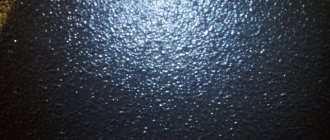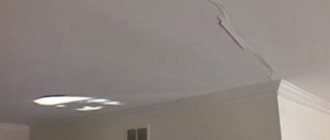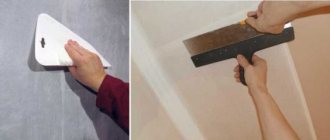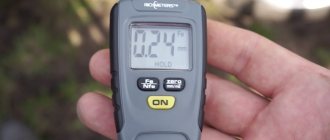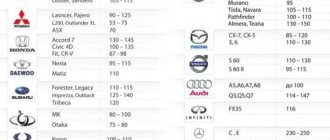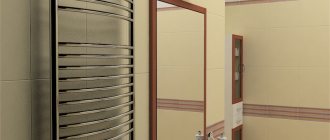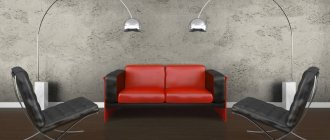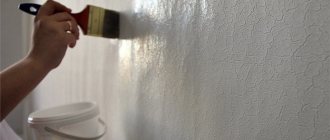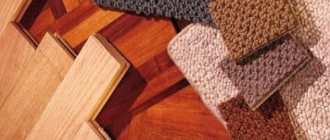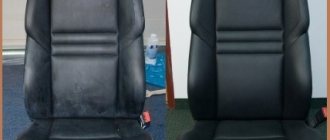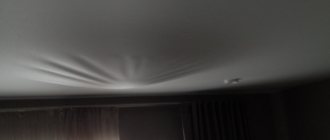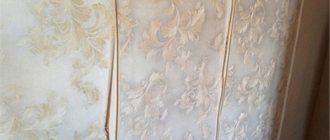Painting defects can have many causes. In general, in order for the paintwork to be of high quality and without significant flaws, it is necessary to take into account and comply with many rules, factors and conditions. A professional in his field, having painted many cars and having studied his craft thoroughly, does a lot automatically, but even for the pros, not everything always goes smoothly.
In this article I will talk about various defects that occur during and after painting. Let's consider the reasons for their occurrence, methods of prevention and elimination.
The main causes of damage
Professionals identify several main reasons for changes in the structure of the coating:
- Violations of the dyeing process technology;
- Failure to comply with operating rules;
- Exposure to incorrect temperature conditions;
- Mechanical damage;
- Incorrect processing;
- Low quality paint;
- Choosing the wrong paint;
- Chemical damage;
- Defects resulting from environmental influences;
- Corrosion of metal.
All of the factors described can lead to defects. Before you begin to repair the damage, it is necessary to carry out diagnostics and identify the exact cause that led to this problem.
Diagnostic methods
Among specialists in the correction of coating defects, there are two diagnostic options: non-destructive and partially damaging coatings.
Non-destructive diagnostics include:
- Visual inspection in proper lighting, without the use of diagnostic instruments;
- Inspect the damaged area using a magnifying glass;
- Using photo paper;
- Use of auxiliary items.
Visual diagnostics Source lkmprom.ru
Many specialists begin diagnostics with a method called “nail test”. This method helps determine the strength of the formed defect. The advantage of this method is the easy removal of inspection marks.
Methods with partial damage to the coating include:
- Using a pencil to determine the extent of damage;
- Using adhesive tape to check the strength of adhesion of damaged paintwork to the surface;
- Lattice cut method.
If none of the above methods help determine the origin of the damage, it is necessary to conduct a laboratory test.
Diagnostic devices
If a visual inspection does not bring the desired result, specialists use diagnostic devices:
- Magnifier;
- Thickness gauge;
- A camera with a professional lens;
- Magnetic eddy current flaw detector;
- Photographic material on an opaque paper backing;
- Gloss meter with measuring angles of 20°, 60° and 85°.
Let's take a closer look at all the possible damage and how to eliminate it.
Magnetic eddy current flaw detector Source geo-ndt.ru
Coating restoration
Removal of a defective coating is usually done manually (scrapers, wire brushes, abrasive sandpaper), with a power tool (brushes, abrasive machines, angle grinders) or local blasting. Before repairing paintwork, precautions must be taken to avoid damaging adjacent areas of high-quality coating. Surface preparation in damaged areas consists of leveling the edges of these areas after removing the coating and ensuring the required roughness (if necessary). Quality coatings that are adjacent to areas of removed coating should be treated to create smooth bevels. The surface of a high-quality coating is processed around the perimeter of the area with the coating removed to a width of 50-80 mm. For this purpose, manual or mechanized processing with abrasive sandpaper is most often used. Damaged areas are repainted using the full coating system or partially, depending on the depth of the damage.
Source: Gots V.L., Ratnikov V.N., Gisin P.G. "Methods of painting industrial products." M.: Khimiya, 1975. 263 p.
Posters on coating defects
Types of defects
There are a lot of different defects, many of which cause a characteristic change in the surface of the paintwork material.
Shagreen
“Shagreen” defect Source sayerlack.by
The most common type of defect, which has many reasons for its occurrence, is shagreen or crocodile skin. The damaged surface resembles wave-like ripples.
Causes:
- The wrong distance was selected between the air spray gun and the work area;
- The wrong compressed air pressure mode was selected. For example, too high a pressure leads to the formation of unevenness during painting;
- A solvent was used that was not suitable for the selected type of paint and varnish material, or the ratio of solvents was violated;
- The compressed air has not been sufficiently purified;
- The paintwork was applied at unsuitable temperature conditions;
- Uneven paint thickness;
Compliance with the standards of technical processes during paint and varnish work will help to avoid the occurrence of such damage.
Web
Defect “Cobweb” Source i1.wp.com
This damage has an external manifestation in the form of many small cracks resembling a cobweb. A defect can occur either immediately after the procedure or after some time of use.
Possible causes:
- The materials used in the painting procedure have incompatible properties;
- The surface is not sufficiently processed;
- The viscosity of the paintwork material is too high;
- Uneven paint application;
- The paint layer is thicker than the permissible standard;
- Surface not dry enough;
- The process took place when the temperature regime was violated.
The surface on which the paintwork will be applied must be processed according to the standards specified in the technical document. Drying in direct sun is not allowed. The problem can be resolved by repainting. Before repairs, it is necessary to first clean the surface of the previous coating using sandpaper.
Bubbles
Defect “Bubbles” Source hitmind.ru
Blistering of the paintwork can take the form of bubbles of different sizes. Bubbles can appear both between layers of paint and under the coating. This process occurs as a result of loss of adhesion between the layers.
Possible causes:
- The presence of water or oil in the material used;
- The surface was insufficiently or incorrectly processed before the process of applying paintwork materials (dust residues after cleaning);
- Heated surface or drying under the sun;
- The paint is expired, improperly stored or of poor quality;
- After the procedure, moisture entered the not yet dry surface;
- Using the wrong thinner.
It will not be possible to remove bubbles that have already appeared. The surface will have to be re-cleaned of paintwork and paint and a new coat of paint must be applied after all the necessary manipulations related to surface preparation have been carried out.
Insufficient coverage
Defect “Insufficient coverage” Source ad-cd.net
Sometimes after the painting procedure you can notice the old layer of paint showing through. Especially if the previous color was darker or brighter.
Possible causes:
- The paint was not mixed thoroughly enough before use;
- A thin layer of paintwork was applied;
- Spots that appear only in certain areas may indicate uneven application of paintwork materials;
- A new layer of paint dissolves the old coating, that is, incompatibility of materials;
- Operation began before it was completely dry.
Poor hiding power only affects the aesthetic appearance and does not affect the quality of the coating. Removing the nitro-varnish coating and repainting will help correct the situation.
Leaks or sagging
Defect “Sagging and Sagging” Source pdrgarage19.ru
This defect looks like an excessive amount of paint, which creates a non-uniform appearance after drying. Smudges can remain both on the surface and on vertical panels or vertical sections.
Possible causes:
- The incorrect distance between the air spray gun and the work surface was selected;
- The spray function is incorrectly adjusted, which produces an excessive amount of paint;
- The compressed air pressure is incorrectly selected;
- The viscosity of the paint does not meet TD standards;
- The material has unsuitable thixotropic properties;
- The paint thickness exceeds the permissible standard;
- Incorrect proportions of viscosity and compressed air have been selected;
- Incorrect operation of the spray gun;
- The surface was insufficiently or incorrectly processed before applying paintwork;
- The work was carried out at unsuitable temperature conditions. Temperatures that are too high or low will cause the solvent to evaporate too quickly or too slowly.
Correction of the defect depends on the thickness of the deposits and their number. Small stains can be easily removed by sanding. Too large sagging is repainted after careful sanding.
Remains of dust, debris
Defect “Weediness” Source pp.userapi.com
This defect is not difficult to identify. Foreign particles in the form of dots are visible on the painted area. Dirt greatly degrades the aesthetic appearance of the product and deprives it of its shine.
Possible causes:
- The surface was insufficiently or incorrectly treated before applying paintwork. This happens if small debris or dust remains on the area being painted;
- Poor quality of the material used;
- The spray nozzle is dirty;
- There is debris in the solvent;
- The clothing or gloves of the worker performing the procedure are contaminated;
- Dirty room;
- The coagulation of the material used is impaired due to long-term or improper storage;
- Poor filtration of paint and varnish material.
Hairline cracks
Hairline cracks in nail polish
The defect is a large number of tiny cracks, the thickness of a human hair and not interconnected. To view them, you need a magnifying glass or magnifying glass. On the surface, the defect appears in the form of dull spots and lack of gloss. With an increase in internal stresses, “hairline cracks” can spread over a large area and lead to complete deterioration of the paintwork.
Reasons for appearance:
- Poor body preparation before painting;
- Failure to comply with the technology of working with two-component paints;
- Use of low-quality coloring compounds;
- Excess or lack of hardener;
- Violation of priming conditions;
- Careless mixing of primers and coloring compounds;
- Too thick layer of paint;
- Insufficient drying time.
Removing paint defects of this type involves thoroughly cleaning the damaged areas to a smooth surface. In the vast majority of cases, complete removal of all paintwork and repainting is required.
Defects arising from exposure to the environment
Environmental influences can have a negative impact on the surface treated with paints and varnishes. Defects resulting from such exposure require re-application of the paint and varnish material.
Bird droppings
Defect from bird droppings Source ad-cd.net
Timely removed waste will not cause serious changes on the surface of the treated paintwork material. Prolonged exposure to biological waste may cause discoloration and deterioration of the coating down to the original layer. This happens due to urea, which is contained in bird droppings. Urea, combined with humidity and high temperature, has an aggressive effect on paintwork materials.
Preparing for painting
Many problems when painting a car arise due to improper preliminary preparation of body panels. This is a very important stage that must be taken very seriously. Basic points include matting, washing, drying, and degreasing.
It is important that the surface to be painted is dry and without the slightest hint of condensation. It is necessary that the temperature in the room where the car is painted is from +10 to +25 degrees Celsius. You need to use the right proportions of paint components and set up the spray gun correctly. You can read more about preparing your car for painting in another article.
Cloudy surface
The defect typically appears as a milky white “fog” on the painted surface. Cloudiness can be present on both the primer and paintwork. The defect can further lead to loss of coating adhesion and blistering.
[goo3]
Main causes:
- Painting in conditions of high humidity and low temperature;
- Use of cheap and low-quality solvent;
- Excessive air pressure;
- Using too much solvent;
- Incorrectly set operating parameters of painting equipment;
- Drafts and improper air circulation.
Minor defects and slight clouding can be removed by polishing. In some cases, damaged areas are repainted using a special solvent. Sometimes simply spraying a solvent onto the damaged area is enough to eliminate the defect.
It is necessary to ensure that there are no drafts in the room and that the temperature is optimal for painting.
Bubbling
Bubbling
High-quality car painting implies a perfectly smooth body surface. Bubbling is manifested in the formation of bubbles of different sizes and densities on the surface of the paintwork. The defect can appear on both old and new layers. Most often, bubbling appears in cases where high air humidity is suddenly replaced by low temperatures.
The main reasons for the appearance of bubbles are:
- Air or moisture getting under the paint layer;
- Insufficiently thorough preparation of the car surface;
- Remains of contaminants between the metal, filler and paint layer;
- Use of low-quality solvent;
- Oil particles in the air ducts of painting equipment;
- Particles of grease, dirt, dust, fingerprints on the body;
- Insufficient drying time between coats;
- Inadequately thick primer.
Eliminating bubbling involves completely removing the paint down to the metal and repainting it again. If the defect occupies a small area, the bubbling area is cleaned and a fresh coat of paint is applied to it.
Flakes
ATTENTION! A completely simple way to reduce fuel consumption has been found! Don't believe me? An auto mechanic with 15 years of experience also didn’t believe it until he tried it. And now he saves 35,000 rubles a year on gasoline! Read more"
Flake formation is one of the most common defects that can occur during the painting process of a car. One of the main reasons for their appearance is a certain mismatch between the thinner used and the type of paint used, which automatically leads to the appearance of just such flakes.
Dry spray
The defect appears as an unevenly colored, rough surface. The main reasons for the appearance of such defects:
- Carelessly prepared primer;
- Long spray distance;
- Excessive air pressure;
- Paint fluidity is too high;
- Using the wrong solvent;
- High temperature and low humidity.
In case of significant surface defects, the part is repainted or varnished. Small defects can be eliminated by thoroughly polishing the surface.
First rain effect
| Description: a one-time change in the color of a paintwork (decorative) coating after moistening (wetting). Causes:
Solutions:
|
Dust-like coating
The defect manifests itself in the form of dry and semi-dry drops of paint, forming a coating on the surface of the body.
Reasons for appearance:
- Incorrect adjustment of painting equipment;
- High air pressure;
- Using the wrong technique for applying the coloring composition, when spraying occurs on adjacent areas;
- Use of a fast-evaporating solvent in dry, hot conditions;
- Using fast drying paint.
To remove dust deposits in the case of a varnish coating, sanding the partially dried layer is sufficient. In the case of a defect on synthetic enamel, the defect is eliminated by wet smoothing and the application of a new layer of coloring composition.
Shagreen
There is another fairly common painting defect, which in its texture resembles the peel of an orange, it is called shagreen. This name is based on the following points:
- Fast solvent evaporation;
- Incompatibility of thinner and varnish with each other;
- Insufficient dilution of the varnish, which may be caused by non-compliance with certain proportions of the components used;
- Poor quality paint spraying, which occurs due to uneven supply of compressed air to the sprayer;
- A serious increase in the distance between the sprayer and the surface that is being painted;
- Significant increase in ambient temperature when compared with these indicators of the surface being painted;
- Serious failure to adhere to the correct drying time interval;
- Use sprayers with a sufficiently large nozzle.
Light shagreen can be quite effectively removed by treating it with an abrasive or by polishing. If this defect is very pronounced, it is worth completely cleaning this area and then completely repeating the painting process.
